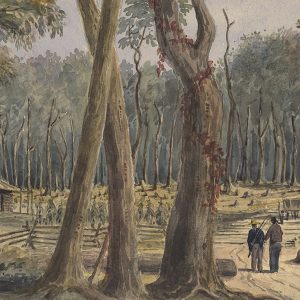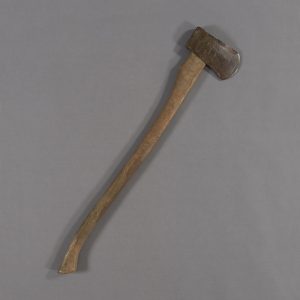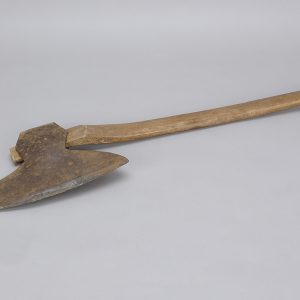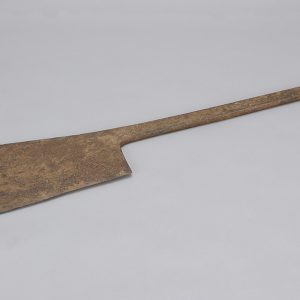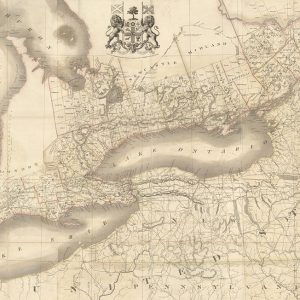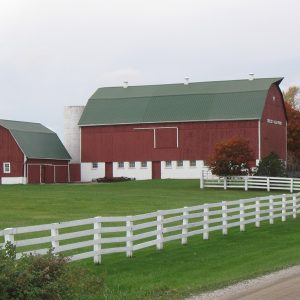Between 1776 and 1840, the non-Indigenous population of British North America increased from under 100,000 to over 1 million. Many newcomers settled in the new colony of Upper Canada, now Ontario. Settlers arriving there found dense forest. The task of clearing and planting the land — and making a home — was daunting.
The settler family’s first tasks were to clear some land and build a log house. The land would eventually produce wheat — Upper Canada’s main export — and other produce. In the meantime, the family needed money to survive the first winter. The forest itself filled the gap. Burning hardwoods for potash and taking on seasonal work in the lumber industry provided extra income.
Clearing the Land
Cutting trees was hard work. Settlers used a felling axe to chop down trees, a broadaxe to square logs, and horses or oxen to move timbers for building. Settlers also burned trees that they did not need for building. The family then boiled the ashes in a kettle to make potash, a soap ingredient, for household use and sale.
It could take years to clear a typical farm lot. Most farmers left some trees standing, for firewood and for maple sugar production.
The Lumber Industry
Lumbering and farming went hand-in-hand in Upper Canada. Farmers and their sons might work seasonally as loggers. Lumbering cleared new land for farming. Logging took place in the fall and winter, as it was easier to slide logs over snow and ice than over mud and rock.
When the ice melted, log drivers moved the logs down rivers and lakes to market. Demand for lumber was high, both in the colonies and in Britain.
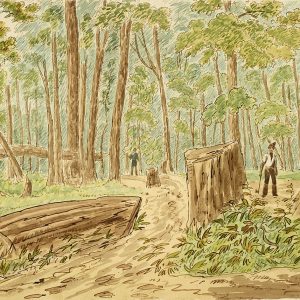 Near Old Sly’s, Rideau RiverJames Pattison Cockburn, 1820s
Near Old Sly’s, Rideau RiverJames Pattison Cockburn, 1820s
Library and Archives Canada, MIKAN 2896243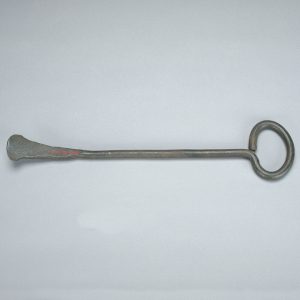 Barking iron1800s
Barking iron1800s
CMH, D-1096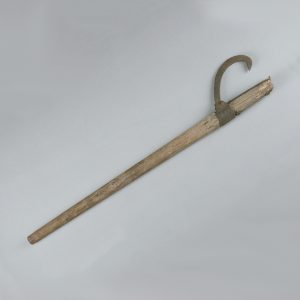 Cant hook1800s
Cant hook1800s
CMH, A-3204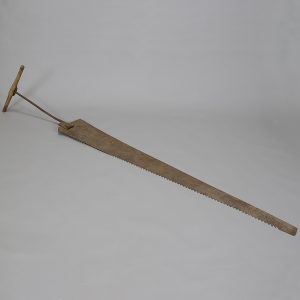 Pit saw1800s
Pit saw1800s
CMH, 74-1212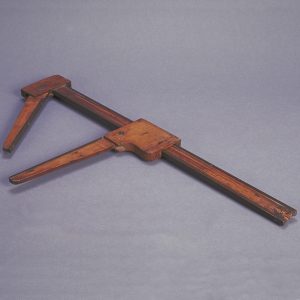 Timber calipers1800s
Timber calipers1800s
CMH, 988.77.525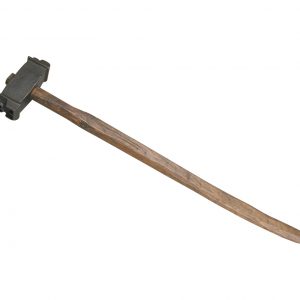 Log-stamping hammer with mark of lumber baron Ezra Butler EddyMid-1800s
Log-stamping hammer with mark of lumber baron Ezra Butler EddyMid-1800s
CMH, D-2274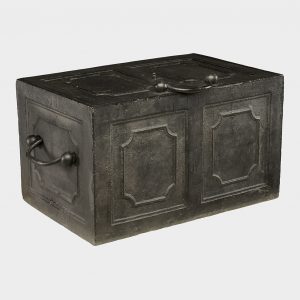 Strongbox belonging to lumber baron Philemon WrightEarly 1800s
Strongbox belonging to lumber baron Philemon WrightEarly 1800s
CMH, 997.34.1
Clearing the Land
Listen to settler Edward Allen Talbot’s account of homesteading in the 1820s.
“We continued encamped in the woods from the 26th of October, until the 1st of December. During this period, we laid the foundation of a house, forty-six feet long, and twenty-one feet wide; one half of which we finished first, for the accommodation of the family, who moved into it on the 2nd of December, – five months and nineteen days after our embarkation for America. During the thirty-five days which we spent in the woods previous to the arrival of the family, our only lodging was a miserable wig-wam… Our only bed, all that time, composed of a few withered leaves, while “a log contrived a double debt to pay / By night a pillow, and a seat by day.” … But the hope of independence is sufficient to sustain the mind under privations still greater than these… While indulging in such joyful and ecstatic visions, the wooden pillow of a new and industrious settler becomes softer than bolsters of down, and his solitary blanket feels more comfortable than sheets of Holland.”
Edward Allen Talbot, Five Years’ Residence in the Canadas, v. 1 (London, 1824), 118-119.
Mixed Farming
Wheat was the main cash crop for Upper Canadian farmers. Farm families also grew fruit and vegetables, and kept livestock, for household use and for sale. Women maintained and processed much of this produce.
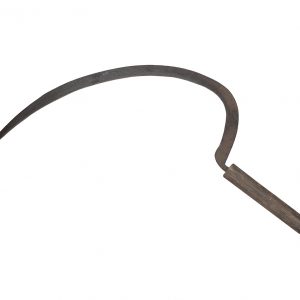 Sickle1800s
Sickle1800s
CMH, A-676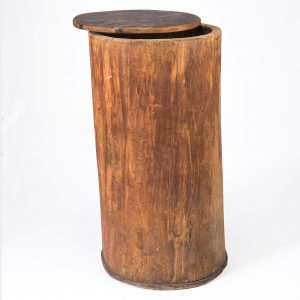 Grain barrel1800s
Grain barrel1800s
CMH, D-910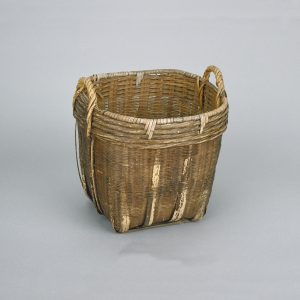 Vegetable basket1800s
Vegetable basket1800s
CMH, F-8105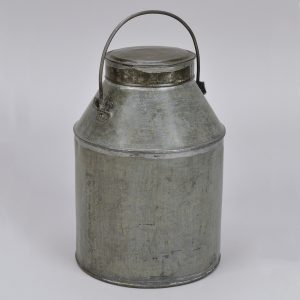 Milk can1800s
Milk can1800s
CMH, A-4892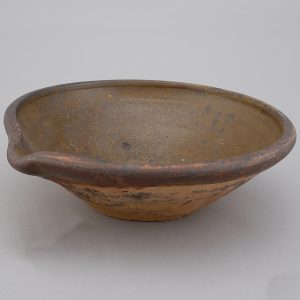 Milk pan1800s
Milk pan1800s
CMH, A-2090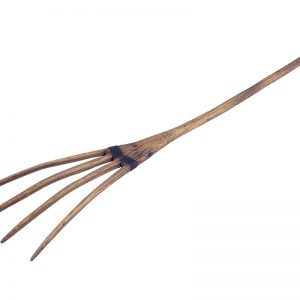 Hay fork1800s
Hay fork1800s
CMH, A-884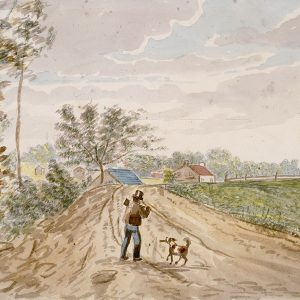 Country SceneJames Pattison Cockburn, 1830s
Country SceneJames Pattison Cockburn, 1830s
Library and Archives Canada, MIKAN 2836159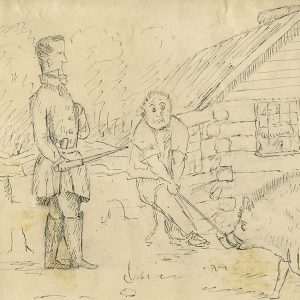 Slaughtering a PigWilliam Elliot, 1840s
Slaughtering a PigWilliam Elliot, 1840s
Western University Archives, A09-093-001
Settling Southwold
Southwold, on Lake Erie’s north shore, was a typical Upper Canadian township. Settlers transformed it from a forested, Indigenous homeland into an agricultural, colonial landscape.
In 1790, Indigenous chiefs at Fort Detroit signed a treaty that gave much of southwestern Upper Canada to Britain. Surveyors divided the land, including Southwold, into townships. The government granted part of the township to Colonel Thomas Talbot, who encouraged settlement.
Southwold Today
Southwold is still a vibrant community today. Although railways, in the late 1800s, and heavy industry, in the 1900s, have left their mark, the legacy of early settlement is still visible. Agriculture remains the economic mainstay. The township’s main roads, Fingal Line and Highway 3, follow the east and north branches of the old Talbot Road. Descendants of colonial settlers still live in the township and surrounding region, not far from the lands their ancestors cleared and farmed.
Photo at top of page:
Bush Farm Near Chatham
Philip John Bainbrigge, about 1838
Library and Archives Canada, MIKAN 2836253

